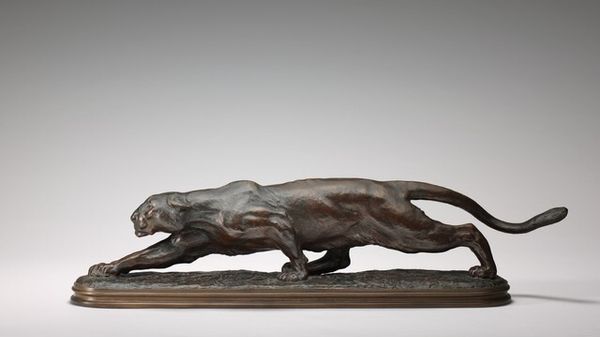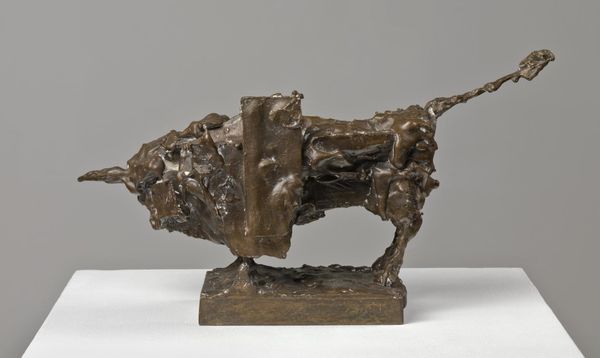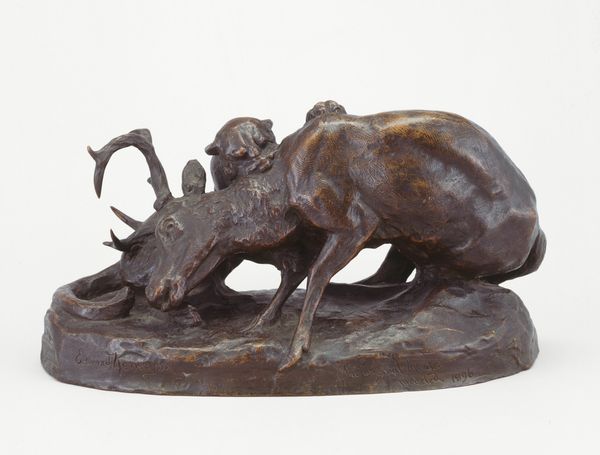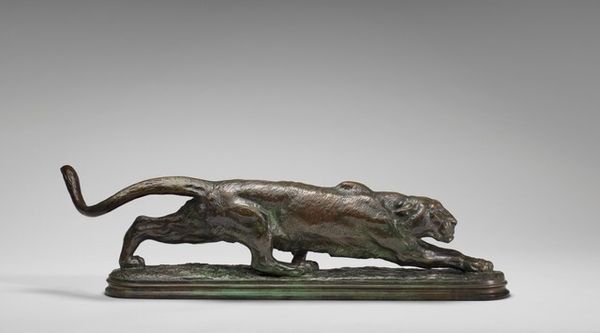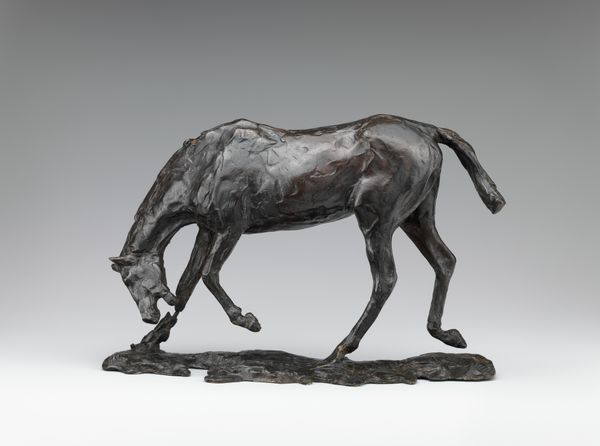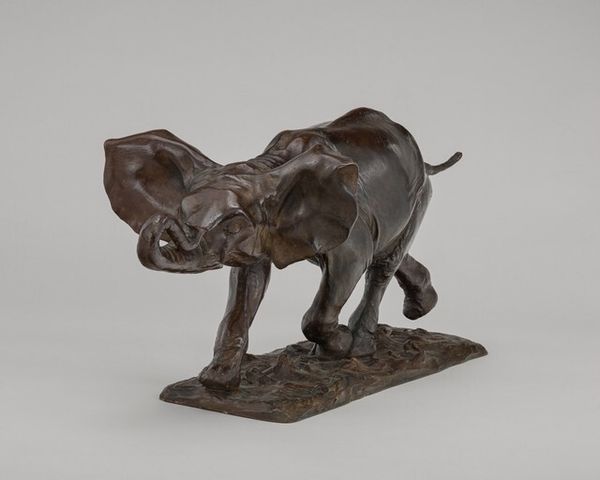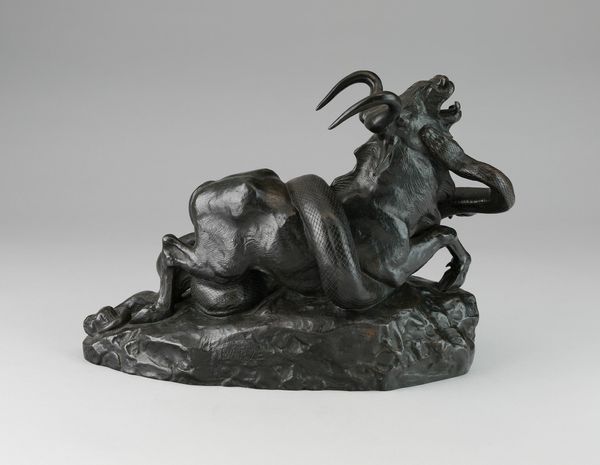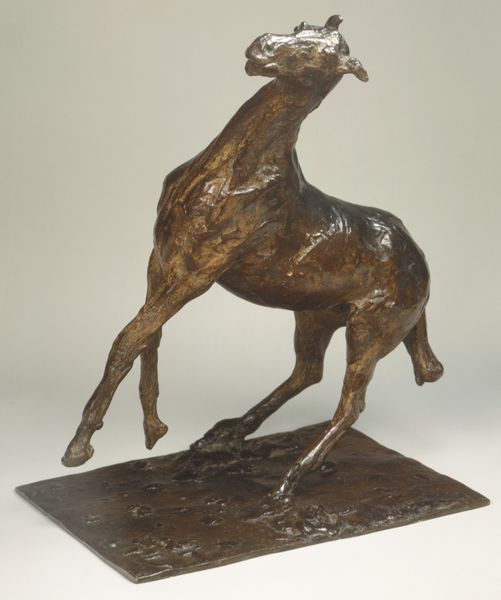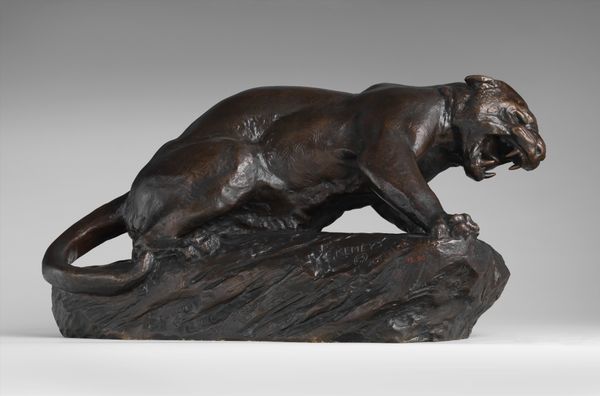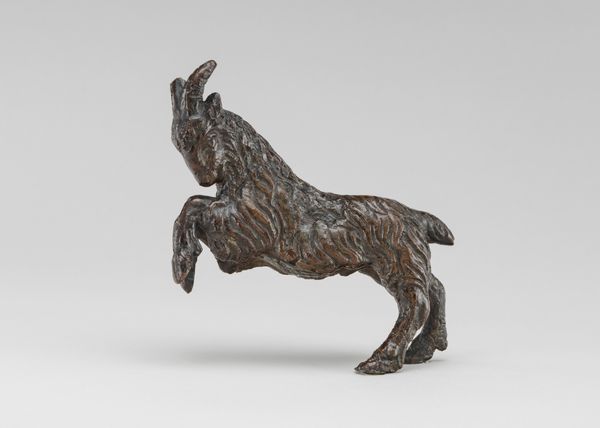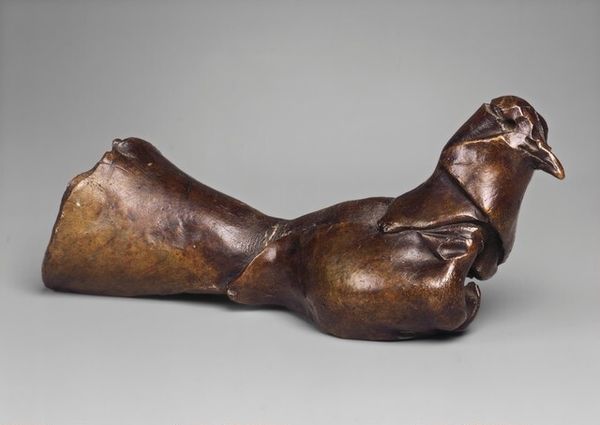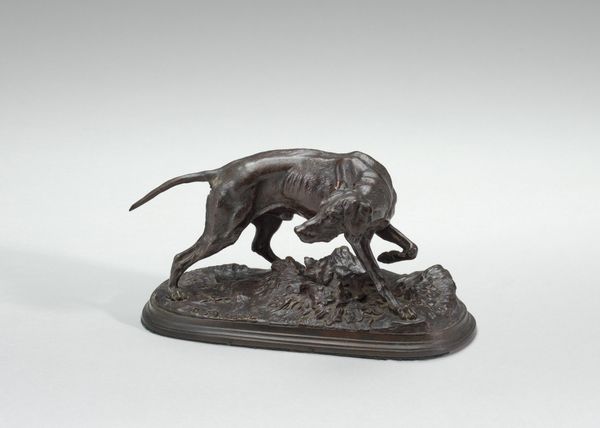
bronze, sculpture
#
sculpture
#
bronze
#
figuration
#
sculpture
#
realism
Dimensions: overall with base: 24.13 × 81.28 × 22.86 cm (9 1/2 × 32 × 9 in.)
Copyright: National Gallery of Art: CC0 1.0
Curator: What a striking bronze sculpture! This is Anna Hyatt Huntington’s “Yawning Tiger,” created around 1917. Editor: It’s phenomenal. The tension between latent power and vulnerability is immediately palpable. The texture of the bronze seems to capture every ripple of muscle under that skin. I’m captivated. Curator: I see it similarly. Huntington was deeply engaged with Realism but she was more than just a copyist of observable reality. Her focus on musculature reveals her fascination with power, certainly. As a female sculptor working in a male-dominated field, might this tiger not represent a kind of suppressed, or barely contained, feminine strength in the early 20th century? Editor: Absolutely. The act of yawning is revealing too, the vulnerability of the throat contrasted with the power of the open jaw. Could it symbolize something culturally—a roar against convention perhaps, the shedding of old constraints? The symbolism is incredibly rich. Tigers throughout cultures, from East to West, represent raw power, but the yawn adds a layer of commentary. It’s not just a fearsome beast, but one caught in a moment of surrender to nature itself. Curator: Indeed. It transcends a simple depiction. During Huntington’s time, the Suffragette movement was gathering momentum. I'm struck by the deliberate act of opening oneself, especially in relation to vulnerability and the projection of one's voice against entrenched societal resistance. It seems profoundly pertinent to conversations surrounding the agency, power and strength of women's bodies. Editor: It does. The symbol echoes across history and cultures. We see the tiger repeatedly signifying authority, might, and even a sort of untamed aspect of the human spirit. Consider, for instance, its prominence in ancient Asian cultures, embodying both celestial power and earthly sovereignty. That resonance gives added meaning, here. Curator: Yes, and I see it connecting to our contemporary moment, when bodies are once again grounds for fierce contestation in social and political debates. Editor: Precisely, and it showcases how relevant older forms and symbols are to how we discuss contemporary subjects. Thinking about cultural memory— the tiger hasn't lost its symbolism for power and vitality, nor its cultural impact. Curator: It's inspiring to revisit an artwork like Huntington’s “Yawning Tiger” to rethink its connections across time and artistic creation. Editor: Definitely. Thank you. It has offered another lens on a compelling creature that has always been part of humanity's collective vision.
Comments
No comments
Be the first to comment and join the conversation on the ultimate creative platform.
